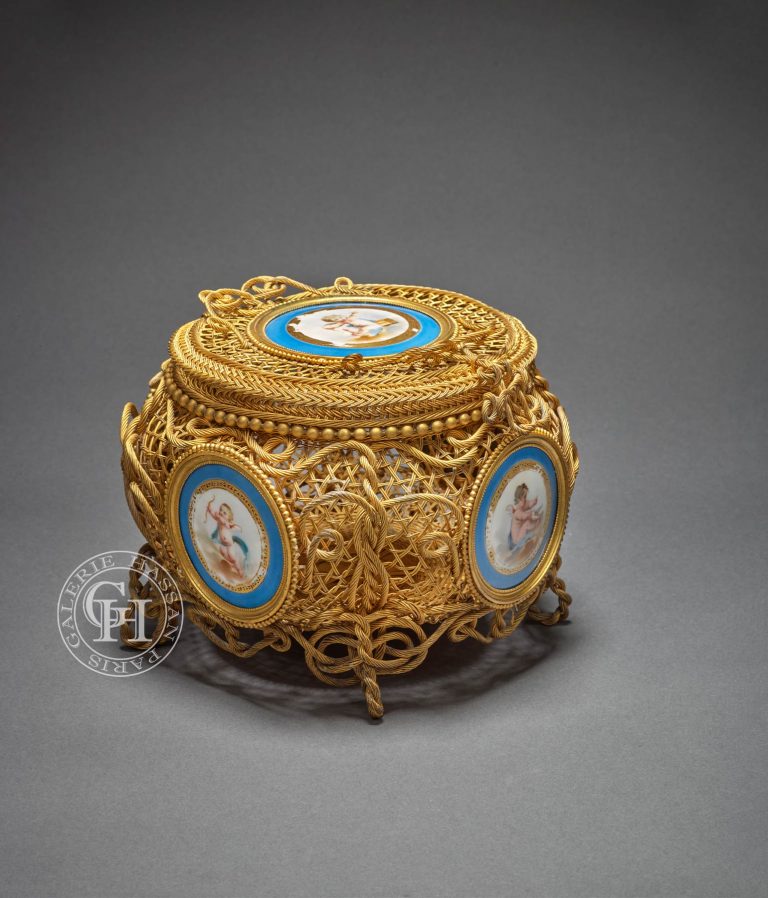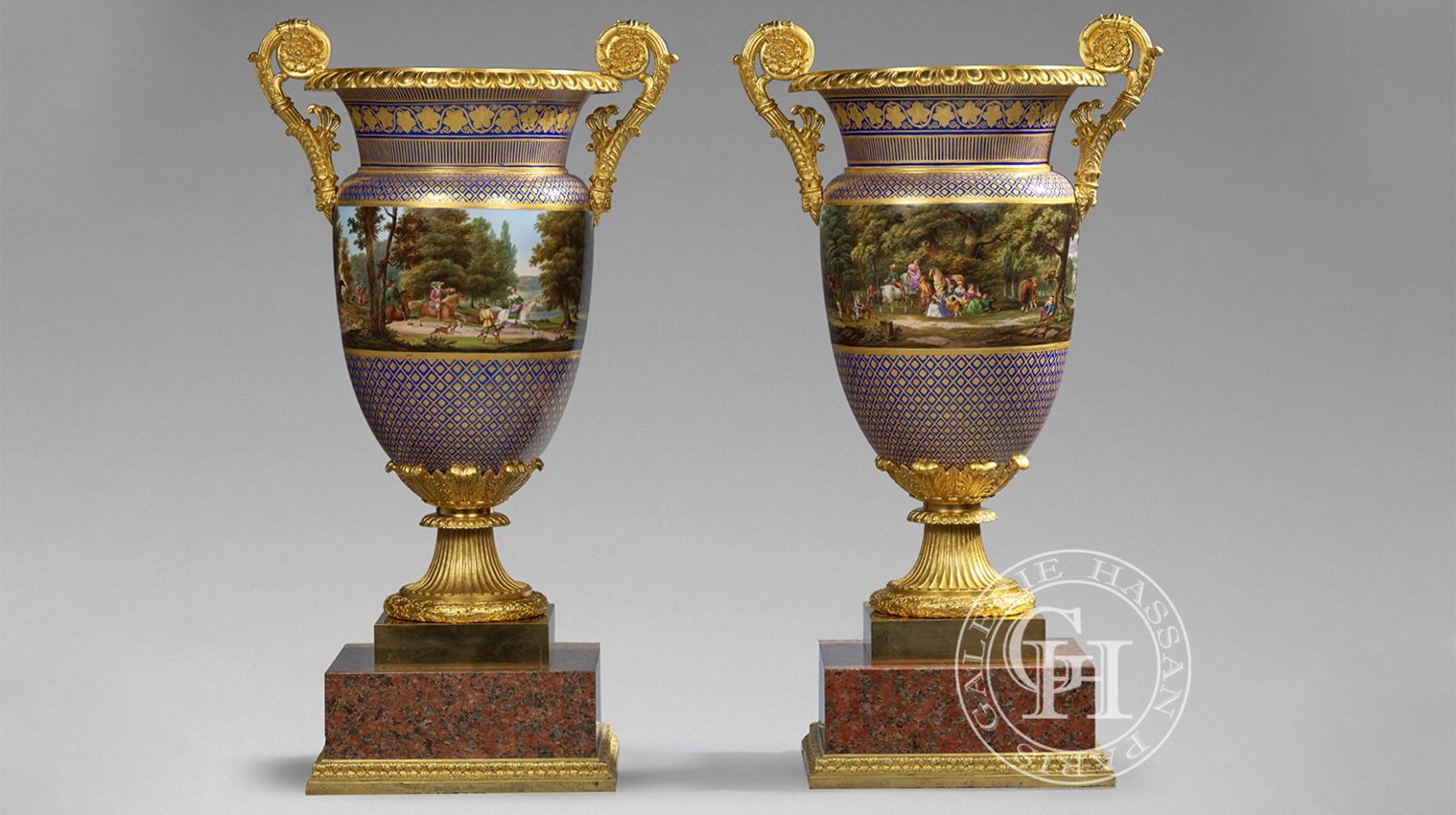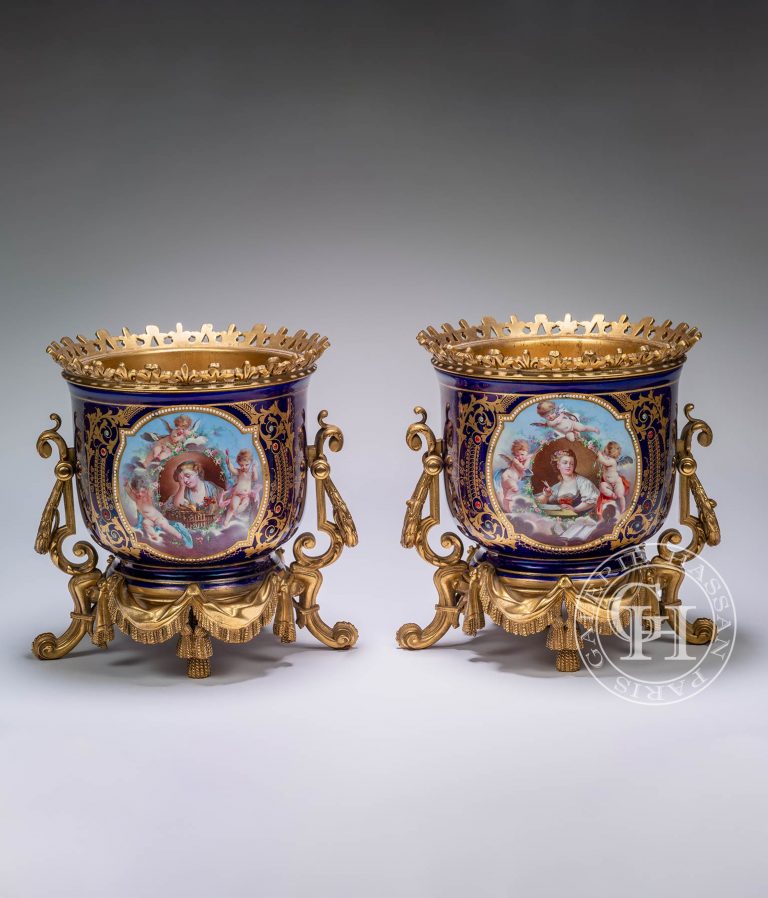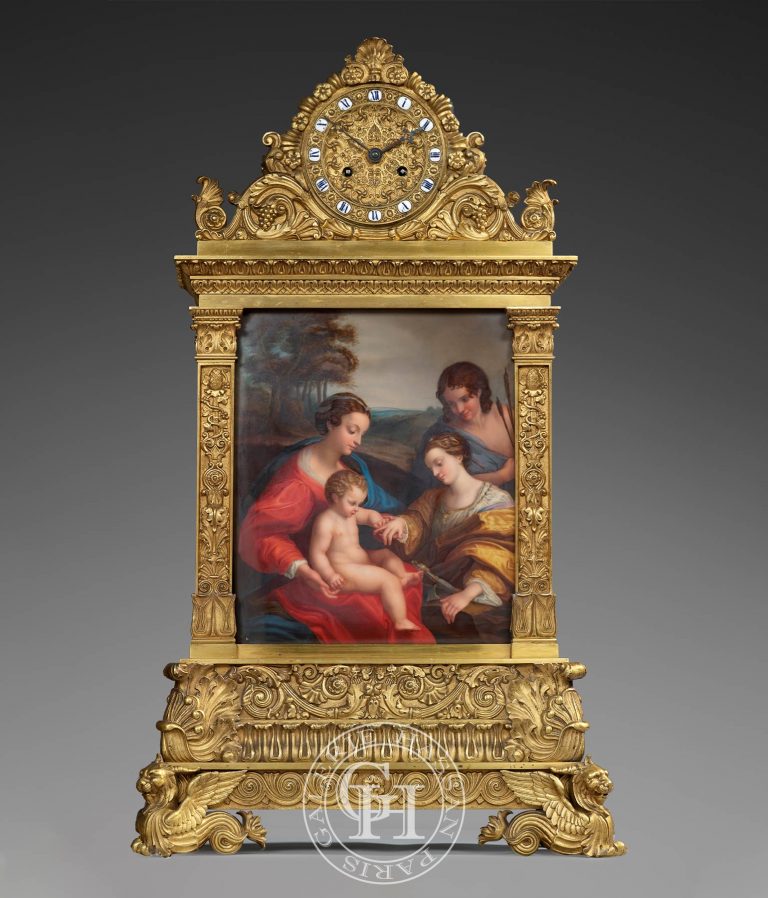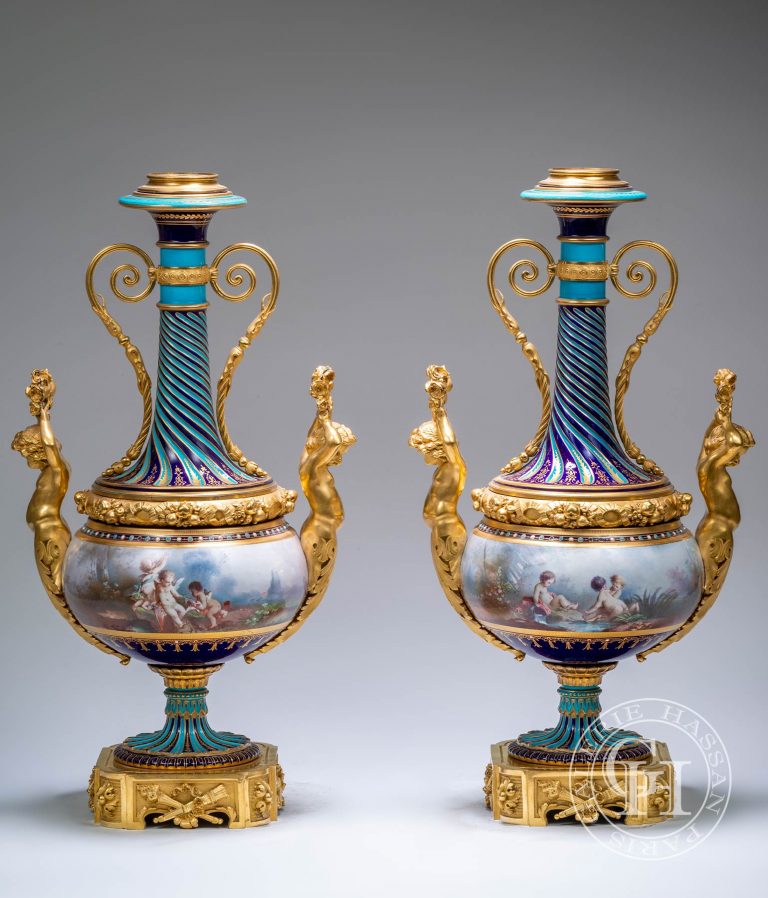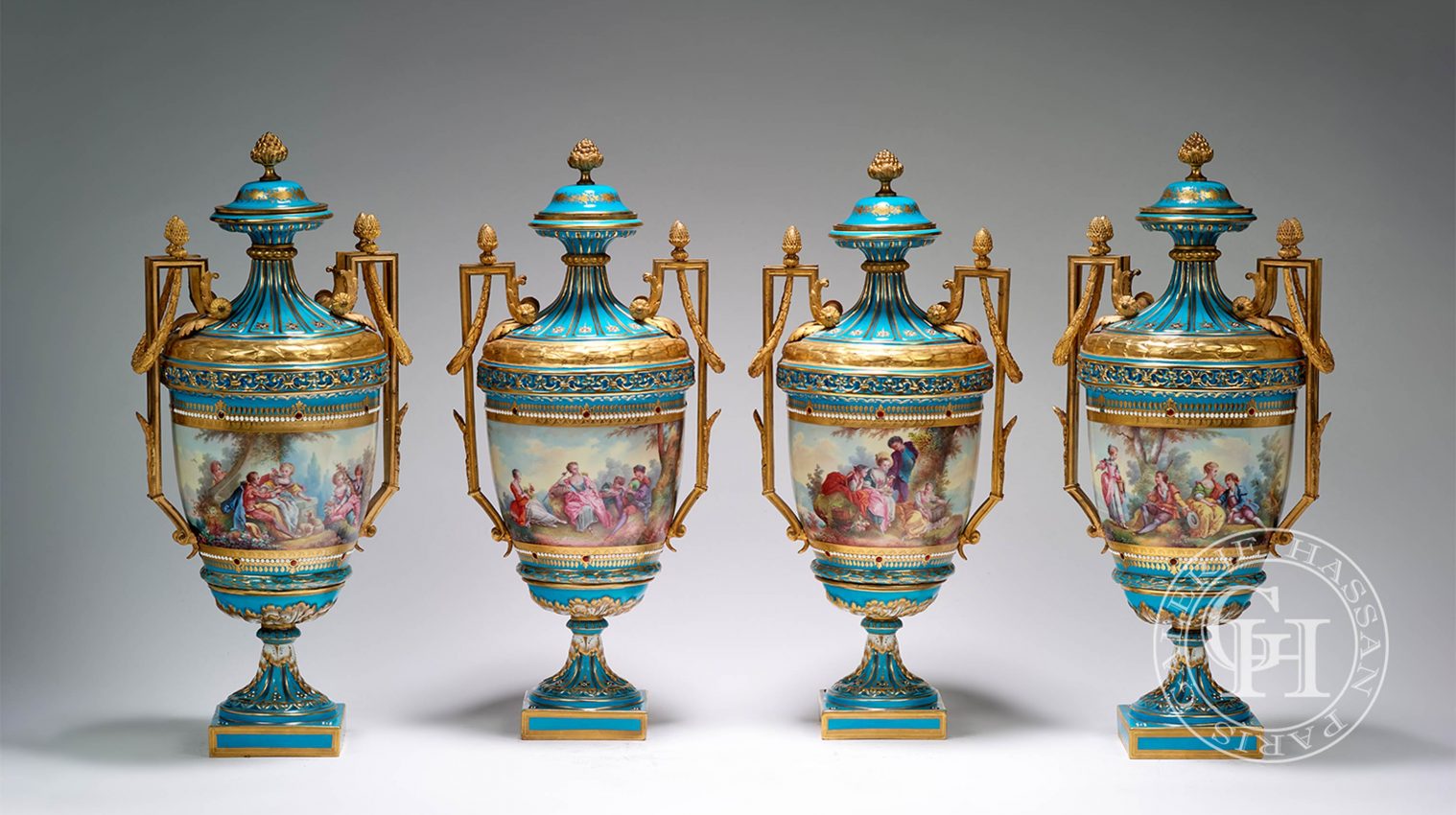Manufacture
Sèvres
1745
The manufactory of Sevres (France, Hauts de Seine) is the first manufactory of porcelain in France, created in Vincennes and transferred in Sevres on the road to Versailles in 1756.
The society founded in 1753 was still independent from the King until 1759, then Louis XV decided to keep it for himself.
In 1768, we began to make tough porcelain, after the discover of the kaolin site in Saint-Yrieix-La Perche, but without forgetting the production of tender porcelain, of a higher artistic value.
In 1800, the manufactory of Sevres began to rise, when the famous Alexandre Brongniart became director. In 1804, the manufactory was named Imperial Manufactory and received subsidies, so that Brongniart was forced to pay attention at the imperial orders: services, vases…
Between 1887 and 1891, the manufactory was directed by the grand ceramist Theodore Deck who introduced the « silica tender pastry » and the « big porcelain » which could be modeled by the artist; he had for successor E. Baumgart. A sensitive rebirth happened at the Exposition Universelle of 1900, with the artistic directors Coutan, Chaplain and A. Sandier, and characterized by the adoption of more simple shapes for the vases and airy decors, inspired by the stylized flora.
After a period of relative stagnation, the manufactory rose again with Jean-Mathieu who, after Serge Gauthier appealed to the best painter’s engravers and sculptors, who worked the material themselves or furnished models executed by highly-specialized workers.


